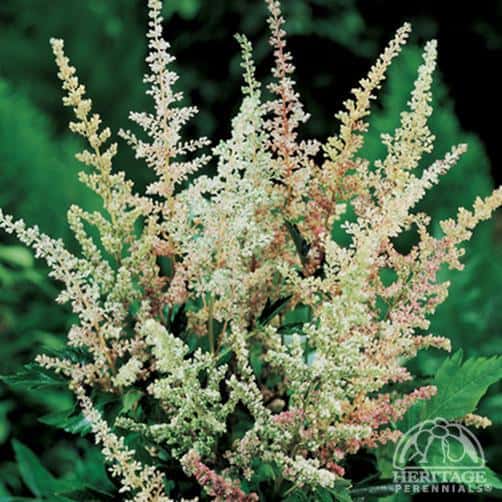
In the exciting winter issue #16 of Garden Making, you’ll find Stephen Westcott-Gratton’s article on all good things about astilbes. I’m careful to let astilbe stems and flowers stand through winter as part of the brown garden — cinnamon brown astilbe flowers, mahogany brown sedum flowerheads, nutmeg-brown flowers on dwarf woodland hydrangea Pee Wee (Hydrangea quercifolia ‘Pee Wee’) and clusters of bronze-brown flowers on panicle hydrangeas like Pinky-Winky (H. ‘Dvppinky’). The brown phase of these spent flowers provides interest all through the cold season, and astilbes are by far the most versatile plant partners in a winter garden.
I use the easygoing and attractive astilbes in pastel colours to act as year-round companions to leggy roses, providing good companionship in four seasons. I’m a rose enthusiast, but it’s always a challenge to find companion plants that will ease the stiff architecture of roses when they’re out of bloom. Astilbes and roses both like the same organic soil with consistent moisture, and both benefit from a thick layer of leaves over their roots during the growing season. Although astilbes are often considered shade plants, they excel in sun when sufficient moisture is available. Compact and blazing white ‘Darwin’s Snow Sprite’ (Astilbe simplicifolia ‘Darwin’s Snow Sprite’, 16 inches / 40 cm, Zone 4) has ferny green spring foliage that quickly softens the bare rose canes in May, and then provides feathery blooms in June for the first flush of rose flowers. When the first roses are finished, pale pink to creamy white ‘Peaches and Cream’ (A. ‘Peaches and Cream’, 24 inches / 60 cm, Zone 4) flowers fill the gap until the second rose flush appears. Late summer and early fall roses tend to bloom on tall stems, and a clump or two of tall Japanese astilbe cultivars, such as dusty rose Ostrich Plume astilbe (A. ‘Straussenfeder’ [thunbergii hybrid], 36 inches / 90 cm, Zone 4), look beautiful with white, yellow or pale pink roses.
But it’s in winter, when the roses canes are stark against the snow, that I most appreciate astilbes. The thick clumps of dried brown stems and flowers fill in gaps and act as a tangible echo of last summer’s garden. With these pretty plants holding snow on their feathery brown blossoms, it’s much easier to keep the faith and know that the calendar will soon move on to another spring.
More about winter gardens:








